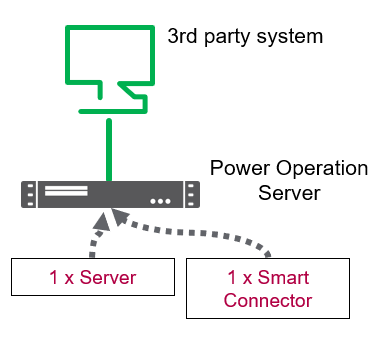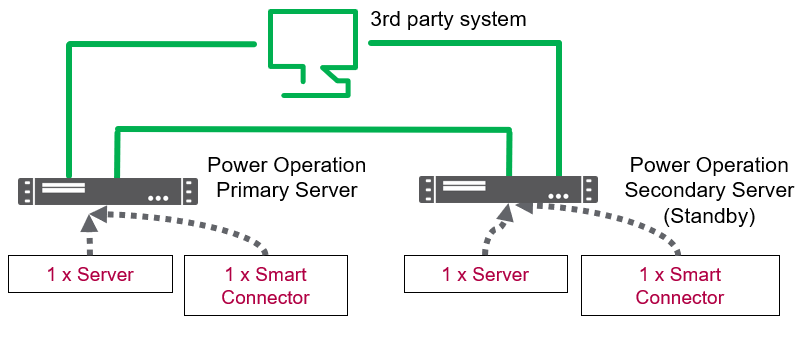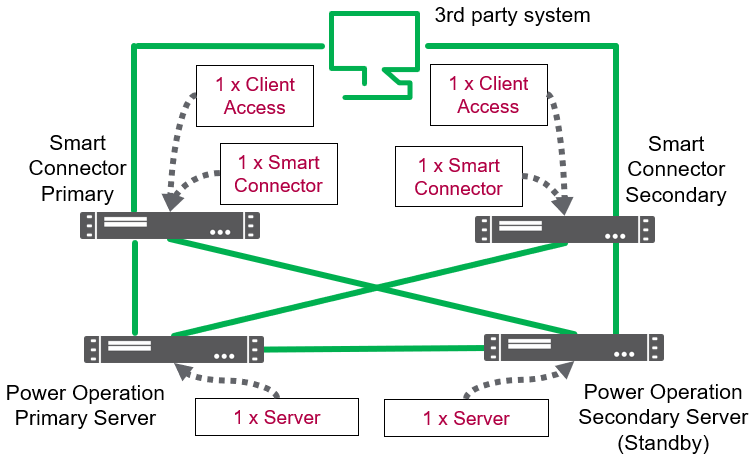Smart Connector Architectures
Architecture #1: Smart Connector without redundancy
The following example architecture illustrates a simple Power Operation system without redundancy using Smart Connector to send data to a third-party system:

Both Power Operation Server and Smart Connector are installed on the same physical or virtual machines.
Architecture #2: Smart Connector with server redundancy
The following example architecture illustrates a redundant Power Operation system using Smart Connector to send data to a third-party system that supports receiving redundant communications:

Both Power Operation Server and Smart Connector are installed on the same physical or virtual machines.
The ability to support the redundant Power Operation architecture with Smart Connector depends on the third-party system. If the third-party system does not have a concept of working with redundant systems, then you should only connect to the Primary Server.
NOTE: This system would require two sets of Power Operation Server and Smart Connector licenses.
Architecture #3: Smart Connector distributed with server redundancy
The following example architecture illustrates a redundant Power Operation system using a distributed Smart Connector architecture to send data to a third-party system that supports receiving redundant communications:

Power Operation servers and Smart Connectors are distributed (installed on different physical or virtual machines). This distributed architecture may be considered in order to achieve additional scalability/performance of the system by isolating the streaming functionality of Smart Connector.
The ability to support the redundant Power Operation architecture with Smart Connector depends on the third-party system.
NOTE: This system would require two sets of Power Operation Server and Smart Connector licenses. Additionally, this system would require a Client Access license to be installed on each separate Smart Connector instance. This Client Access provides the redundant communication connection back to the Power Operation servers.